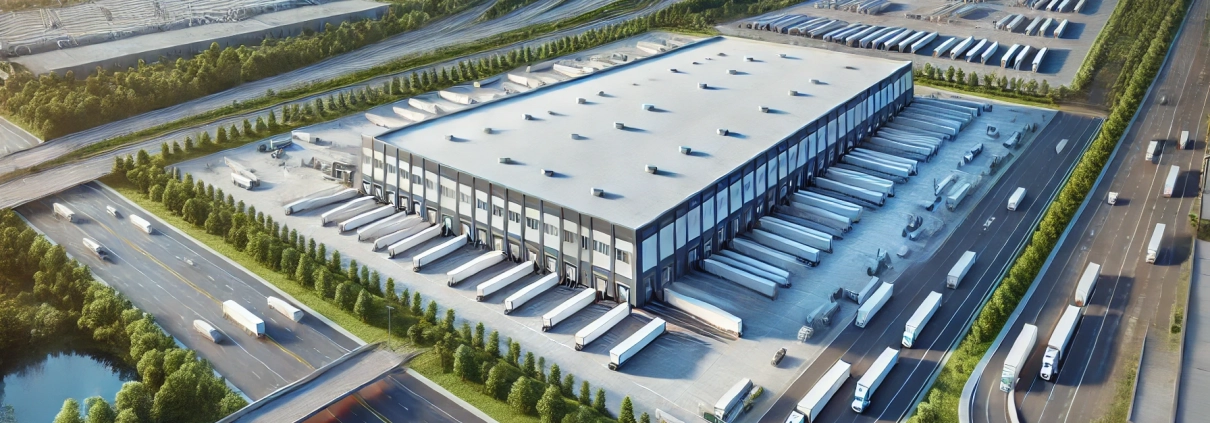Levered Cash Flow
The net cash inflows and outflows of a real estate investment taking into account cash flows related to financing. Levered cash flows generally consist of total investment costs, loan fundings and payoffs, net operating cash flows after financing, and asset reversion cash flows (i.e. net proceeds from sale). In real estate financial analysis, the levered cash flow line is used to calculate the levered internal rate of return and levered equity multiple of a prospective real estate investment.
Putting ‘Levered Cash Flow’ in Context
Scenario
Ironclad Capital Partners, a real estate private equity firm specializing in value-add investments, has identified an industrial property in suburban Portland, Maine. The property, Pine State Logistics Center, is a 250,000-square-foot warehouse with proximity to major transportation routes. The building is 70% occupied, and the remaining 30% represents significant lease-up potential. The purchase price is $15 million, and Ironclad plans to invest an additional $2 million in capital improvements to attract new tenants and optimize rents.
Levered Cash Flow Analysis
Ironclad’s analysis of Pine State Logistics Center includes a detailed projection of levered cash flows, which account for the property’s financing structure. These cash flows are essential for calculating key return metrics such as levered internal rate of return (IRR) and levered equity multiple.
The levered cash flow projection includes:
- Total Investment Costs: The total project cost is $17 million, which includes the $15 million purchase price and $2 million for capital improvements.
- Loan Funding: A commercial mortgage loan of $10.5 million (70% loan-to-value ratio) is used to finance the acquisition, leaving $6.5 million in equity required.
- Net Operating Cash Flows After Financing: The stabilized Net Operating Income (NOI) is projected at $1.4 million per year. After deducting annual debt service of $735,000, the levered cash flow from operations is $665,000 annually.
- Asset Reversion Cash Flows: After five years, Ironclad plans to sell the property for $20 million. After repaying the remaining loan balance of $8 million, the net sales proceeds to equity investors are projected at $12 million.
Return Analysis
Using the levered cash flow projection, Ironclad calculates a five-year levered IRR of 15% and a levered equity multiple of 2.0x. These metrics indicate that for every $1 of equity invested, $2 in total returns is expected, including both cash flows from operations and the net sales proceeds.
Risk Considerations
Levered cash flow analysis highlights the importance of stable NOI and successful execution of the value-add strategy. If market rents do not meet projections or leasing timelines are delayed, the property’s cash flows could be insufficient to cover debt service. This could put investor returns—and potentially the investment—at risk.
Key Takeaways
Levered cash flow captures the impact of financing on a real estate investment’s cash inflows and outflows, combining operational performance with financing costs. This analysis is crucial for evaluating the viability and risk-adjusted returns of a leveraged investment.
Frequently Asked Questions about Levered Cash Flow in Real Estate
What is levered cash flow in commercial real estate?
Levered cash flow represents the cash inflows and outflows of a real estate investment after accounting for financing activities. This includes loan fundings, debt service, and net sales proceeds after loan payoff, making it essential for calculating levered IRR and equity multiples.
How is levered cash flow calculated in a real estate deal?
Levered cash flow is calculated by starting with the net operating income (NOI), subtracting debt service (loan interest and principal payments), and incorporating any loan fundings or payoffs and proceeds from sale. In Ironclad’s case, $1.4 million NOI minus $735,000 debt service resulted in $665,000 annual levered cash flow.
Why is levered cash flow important for investors?
Levered cash flow reflects the actual returns available to equity investors after financing costs. It helps investors understand how much money they’ll receive and when, which is vital for assessing investment viability, especially in leveraged deals.
What metrics rely on levered cash flow for evaluation?
Levered internal rate of return (IRR) and levered equity multiple are both derived from levered cash flow projections. For example, Ironclad calculated a 15% levered IRR and a 2.0x equity multiple using their five-year projection.
How does levered cash flow differ from unlevered cash flow?
Unlevered cash flow excludes any financing effects and reflects the property’s income before debt payments. Levered cash flow subtracts loan repayments and includes financing inflows/outflows, offering a more realistic picture of returns to equity investors.
What risks are associated with relying on levered cash flow?
Levered cash flow projections assume the property will perform as expected. If rents fall or leasing takes longer than planned, cash flow may not cover debt service, jeopardizing investor returns. As noted in the Ironclad example, a drop in occupancy could strain cash flow.
Click here to get this CRE Glossary in an eBook (PDF) format.

